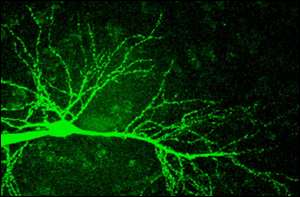| Altered Images For Brain Damage Patients |

People with visual agnosia could believe
these animals are real
Imagine looking at a dog - and not recognising it as a dog. What if you looked at a sheep or a cow, and didn't know what it was?
And what if you looked at the pictures above - and thought the "babex" and "bunnyphant" might be real?
That is the situation for some people with visual agnosia. People with the condition can have trouble recognising animals, faces or objects.
Now a series of films entitled "Eye See" is being planned to allow everyone to see the world as visual aphasics see it. The makers hope they will raise awareness of the condition, which affects up to one in four stroke victims.
Visual agnosia is a disorder of the brain's visual processing system, and it can take lots of different forms depending on which area of the brain is damaged. Bill Alker, a spokesman for Headway, the brain injury association, said it was a rare, but recognised condition which could be caused by head injury. "It is condition characterised by an inability to recognise and identify objects or persons despite having knowledge of the characteristics of the objects or persons". "Traumatic brain injury also known as head injury can be the cause. For example as the result of an accident, damage caused specifically to the occipital or parietal lobes in the brain result in agnosia."
Recognition
One of the most interesting cases of visual agnosia is Philip, a man in his 40s who suffered brain damage in a car accident 24 years ago. Since then, he has not been able to recognise real animals - and hasn't been able to tell which are fake. He is also unable to recognise familiar faces - including those of close family and friends unless he is helped by hearing their voices, or recognising their clothing. Philip was a trainee draughtsman before his crash. Since it happened he has tried to take up jobs and even run his own business, but it has been difficult because he cannot recognise people.

A 'bunnyphant' - a rabbit's head on an elephant's body
Dr Ros McCarthy, a neuropsychologist at Cambridge University who is working with Philip, said: "He goes home and knows the woman there is probably the same one he has always lived with but is not totally sure until she speaks. "He recognises movement and voices, but not faces." She added: "Likewise he has problems identifying some animals and fruit and vegetables. He will look at a sheep, a deer or even a bear and say that they are fantastical creatures, they don't really exist".
No 'memory bank'
"But when I showed him a picture of a 'babex', something I had concocted which was part ibex and part baboon he said the horns were tusks and thought it might be something you shoot in Scotland". "So, I believe he had it confused with a deer. He also thought another creature, a 'bunnyphant' - a mixture of rabbit and elephant - was a real thing."
The reason Philip and others with visual agnosia have these strange visual worlds is that they have lost the normal long-term "memory banks" we use when recognising visual information. However, he is able to use temporary memories to help his recognition. For example, when adverts are being run for Penguin biscuits, he can recognise the animal. Dr McCarthy said: "When there's an advertising campaign going on for Penguins, he can name penguin pictures, but he always comes up with the advertising slogan. But once the campaign ends, it starts fading from his memory. Sometimes he sees a duck and thinks its a penguin - and he sees a penguin and thinks it might be a seal." Dr McCarthy said Philip simply did not have "a sense of familiarity" for animals.

A 'babex' - a baboon with an ibex's head
She added: "When he sees one of these composite animals, he thinks they are just as likely to be real as a genuine animal." But with other categories of image, he can distinguish between real and made-up images. For example, he would know that an image showing the front end of a car attached to a train carriage was not real. Other visual agnosics can have the opposite problem, and find it difficult to recognise objects. Dr McCarthy said Philip is quite unusual because he has the problem in a very uncomplicated way.
Many people with agnosia may have additional difficulties in communication or in daily memory. Philip is fortunate in having a very restricted area of difficulty. She added: "He knows its his problem and he finds it quite interesting."
Perception
Dr McCarthy said visual agnosics cannot be "cured". "You can't change them but you can help them to cope better to recognise what the issue is, and to find ways around the problem." She said part of the reason for making the films, which will be funded with £38,000 from the Wellcome Trust, was to help people understand the condition. I hope we can produce these films from the point of view of the affected individual, to try and convey in some sense the way that brain damage affects the way you see and interpret the world," she said. "And to show that this is just as valid a way of looking at it - it's just different."
|